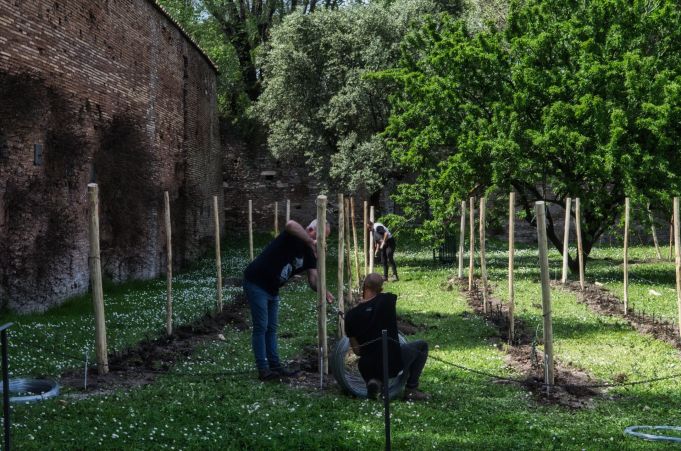Pliny's ancient vines come back to life in the heart of Rome.
A small vineyard has been established on the Palatine Hill as part of ongoing efforts to restore the site's imperial gardens and Renaissance-era Horti Farnesiani to their original glory.
The 500-sqm plot of land is in the Vigna Barberini - named after the powerful Roman family that owned the area in the 17th century - and is part of the 40-hectare Colosseum Archaeological Park.
The vineyard has been cultivated with 360 vines - taken from rooted cuttings of the white Bellone variety - planted in April in an area that does not risk interfering with archaeological ruins.
The project is being undertaken in collaboration with the Cincinnato winery in Cori, located about 60 km from Rome in the surrounding Lazio region.
“We enjoy an enduring bond with Rome and the civilisation it represents, in particular with its agricultural origins" - said Cincinnato winery president Nazzareno Milita - "A bond that legend traces back to the Roman legionaries who carried not only weapons but also rooted cuttings, thus taking wine-growing culture all over Europe and then worldwide.”

The Colosseum Archaeological Park director, Alfonsina Russo, defines the project an “ethical operation” which “aims to develop a public awareness of culture, but is also educational as it will schedule a series of workshops, visits and tastings for park visitors.”
In the late Middle Ages and after the decline of the Horti Farnesiani, the Palatine Hill was used for farming, its slopes planted with fruit trees, vegetables and vines.
The choice to cultivate the Bellone variety was inspired by Pliny the Elder’s Naturalis Historia, in which he discusses the “Pantastica” grape, an ancient native Lazio vine and the ancestor of Bellone.
The wine being produced on the Palatine Hill will be ready for harvesting in three years' time however it will not be sold commercially.
The vineyard is the latest in a series of biodiverse projects on the Palatine, joining the organic Palatinum olive oil and the Ambrosia del Palatino wildflower honey.
For full details about the vineyard project see the Cincinnato website. Photos courtesy Cincinnato Winery.
General Info
View on Map
Making wine on Rome's Palatine Hill
Palatine Hill, 00186 Rome, Metropolitan City of Rome, Italy


















